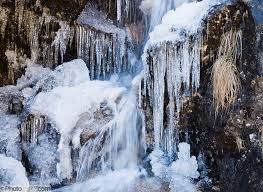[KATHMANDU] The Nepal Himalayas maybe facing a water crisis over the next decades. A new study forecasts decreasing stream flows and ice volume in the Nepal Himalayas. Dire consequences are in store for power production, irrigation and food security. And that’s bound to have a huge impact on neighbouring countries as well.
A joint study supported by by the Polytechnic University of Milan (PUM)and the Nepal Academy of Science and Technology says so. The study, to be published in September, says stream flows in the Dudh Koshi river basin of Nepal are expected to decline 30 per cent by 2100, while ice volume in the glaciers feeding the river may decline by half during the same period.
Predicting negative impacts on agriculture and hydropower potential in the region, the authors urge authorities to prepare for a future decline in water availability.
“Climate change is already affecting crops in Nepal, and in the Dudh Koshi area, lack of irrigation water will worsen this effect,” says one of the researchers, Daniele Bocchiola, an associate professor at the Polytechnic University of Milan (PUM).
The researchers collected data from the Dudh Koshi river area, during field expeditions over three years: 2012—2014.They studied ice melt, debris thickness on the Khumbu glacier, ice flow velocity, hydrological fluxes within the river, and snow depth at high altitudes.
The field data was combined with historical ground and satellite data, as well as global climate models to assess changes in the hydrological cycle until the year 2100. A glacio-hydrological model for 2045—2054 and 2090—2099 emerged and this was compared against data for 2012—2014.
At present, melting ice contributes about 55 per cent of stream flows annually, with snow melt accounting for 19 per cent. The scientists predicted a four per cent decrease in the flows, with ice melt making up 45 per cent of stream flows and snow melt 28 per cent. By the end of the century ice melt would account for just 31 per cent of stream flows in the river, while snow would contribute 39 per cent.
This actually means that the glacial ice will be decreasing, and the streams will become more dependent on falling snow, or they will become snow-fed streams. The first impact will be felt by the local population of 110,000 people — projected to climb to 140,000 by 2100.
“In the Everest valley, as in many other areas in Nepal, there is tremendous need for irrigation to increase crop yield, and food security, and of hydropower plants to capture at least part of the tremendous, yet unexplored, potential of the area, especially given the low availability of electric power for the local population,” said Bocchiola, adding that local authorities need to study adaptation strategies.
[Newsnet Desk]


